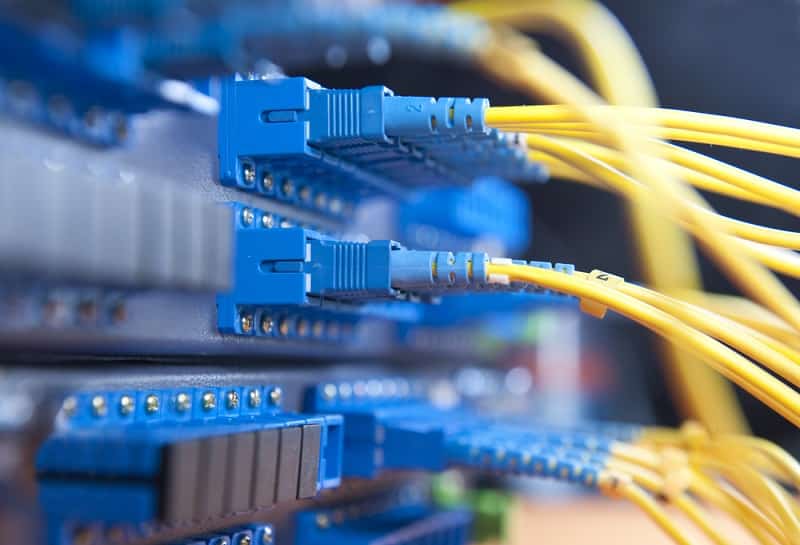
If you are trying to decide on the best way to connect to the Internet the number of options available can make your choice a very confusing one. One of the more popular methods for establishing Internet connectivity is fiber optic Internet due to its higher rate of data transfer speed which makes using applications such as VoIP (Voice over IP) telephony and video faster and easier. To clarify the concept of fiber optic Internet we will address some of the most frequently asked questions to help you make an informed decision as to what options are available for Internet connectivity.
Frequently Asked Questions about Fiber Optic Internet
1. What exactly is Fiber Optic Internet?
Fiber optic Internet produces faster data transfer speeds via the use of light pulses that form an electromagnetic carrier that is capable of sending data at faster speeds through the use of a glass tube. This type of Internet connection is more expensive and complex to install however it produces an extremely fast connection over extended distances. Usually the longer the distance the slower your Internet connectivity will be but this is not the case with fiber optic Internet.
2. Can You Obtain a Wireless Connection?
Yes. It is possible to configure wireless to work with a fiber optic connection however it is important to be aware that the connection may not run as quickly as a direct connection will. This is because the speed of wireless will depend upon the type of equipment you are using to establish connectivity and the amount of electricity that is transmitted through your router. Regardless, you can still combine wireless with fiber optic although the connection speed will be slightly less than a direct connection.
3. How Do You Get Connected to Fiber Optic?
There are several different options available for establishing fiber optic Internet connectivity. It is important to note that the options may vary depending upon your location and the availability of fiber optic by your local Internet Service Provider.
That said the fastest connection is through a direct fiber optic connection in which the Internet Service Provider will run a direct line from their central office to your home. This is significantly more costly however the payoff is worth it because you will be able to enjoy the benefits of a larger amount of bandwidth for running applications that depend on a high speed Internet connection.
Another type of fiber optic connection involves the use of a junction box in which several subscribers can connect. The fiber optic connection is established by the Internet Service Provider who runs a fiber optic line to the junction box where ISP customer connects to the box via a coaxial cable. The faster connection is established because the junction box is closer to the customers however; this type of connectivity is still slightly slower than a direct line due to the use of the coaxial cable.
The last type of connection is achieved through the sharing of fibers by multiple users. The Internet Service Provider runs a fiber optic line into a well populated area where the fibers are then split into individual fibers that can be accessed by multiple users. This type of Internet connection will provide you with higher bandwidth but the speed of the transfer rate may vary depending upon how many customers are accessing the connection simultaneously.
4. Isn’t an Ethernet Connection Just as Speedy?
An Ethernet connection is the simplest form of establishing connectivity to the Internet. With the use of an Ethernet modem and a Ca5 cable you can be up and running rather quickly. Although an Ethernet connection is easier and less costly to establish, it may be difficult to achieve a high speed connection depending on how far your location is from the central office of the Internet Service Provider. The farther away you are the slower your Internet connection will be. This is not the case with fiber optic Internet in which distance is not a factor that determines data transfer speeds.
5. What Type of Equipment is Required?
If you establish a direct connection to your home chances are you will need a network device that converts the fiber optic signal to enable it to communicate with your PC. This device is typically installed on the exterior wall of your home and allows the signals to be interpreted by the fiber optic modem or telephony equipment if you are using it. You will also need a router that is capable of accepting a fiber optic connection. Most standard broadband routers are not equipped for this type of connection however you can verify this information with your Internet Service Provider.
These are a few of the most commonly asked questions when it comes to fiber optic Internet connectivity. The type of connection you can establish will depend upon your location and the options that are provided by your Internet Service Provider.
Hello Benmin, thanks for your articles! Two to three years ago Centurylink (CenturyTel) put a fiber optic cable down our rural road in Wisconsin, but they never put the unit at the end of our road that would actually hook the houses up to the fiber optic. I believe they took government money to put the fiber in, but never followed through with this because they would have to compete with other providers who would then be able to access that fiber! Centurylink told me that they had a deadline the end of 2017. Our service is pathetic. What can be done to expose this?